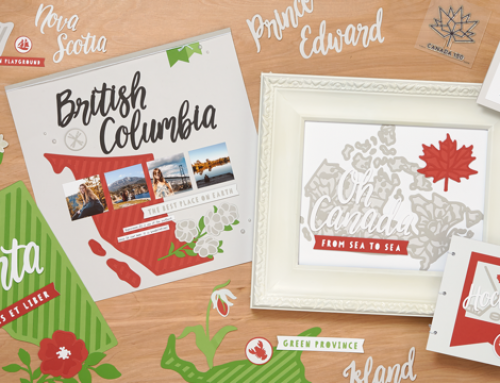This hour it's all about the the "wonders" of Canada this hour If you're just joining us now, be sure to start at the beginning right here!
Boasting the most extreme tides in all the world, the Bay of Fundy lies between New Brunswick and Nova Scotia, on the eastern border of Canada. (For reference for our American readers, we have 4 provinces north and more east of the state of Maine.)
The tides on the Bay of Fundy fluctuate as much as a 5 storey building every day. When the tide is out as you can see above, you can walk on the floor of the Atlantic ocean.
The cliffs, caves, and geological formations attract visitors from all over the world. Fossils of dinosaurs, nautical creatures, minerals, and gems have all been found in the area. The Bay of Fundy is also know to be home to some of the rarest species of whales! Known as one of the 7 Wonders of North American we're sure you can see the beauty that is the Bay of Fundy!
Bay of Fundy Facts: (thank you Buzzle!)
- The amount of water that flows in and out of the Bay of Fundy during one tide cycle, is more than the combined flow of the world's freshwater rivers!
- The Bay of Fundy is home to the world's highest tides, which can reach a height of 3.5 meters, i.e. 11 feet. The tides in the Minas Basin can rise up to 13 meters (43 feet), on an average.
- During springtime, tides as high as 16 meters or 53 feet can be seen in the Bay of Fundy, which creates a unique and breathtaking view. The highest tides in the world occur in the Minas Basin, Nova Scotia.
- Visitors can expect to see two high and low tides in every 24 hours; the time between a high and a low tide being six hours and 13 minutes, on an average.
- The Bay of Fundy has earned worldwide recognition for its diverse ecosystem and the exceptional pyramid of marine food chain. Many people compare it with the Great Barrier Reef of Australia and the Rain Forest of Brazil.
- The nutrient-rich water is home to enormous amounts of krill, squid, and fish like, herring, mackerel, and pollock, which attract several species of whales, including the endangered Northern Right Whale.
Niagara Falls is another Canadian wonder! Three waterfalls come together, the Horseshoe Falls (most powerful waterfall in North America!), the American Falls and the Bridal Veil on the border between Canada and the US and combined create the highest flow rate of any waterfall in the world with a vertical drop of more than 165 feet (50 m). It's a stunning view as you watch the water crest over and wonder if it will ever stop! Two years ago when Ali Edwards and our friends from Doodlebug were visiting Canada for our Crop & Create event we took them to see Niagara Falls in January and for the first time in my lifetime it was almost completely frozen. Yes, it was that cold! Lit up at night, it's quite a spectacle to see.
Niagara Falls fun facts:
- About 28,000,000 (that’s 28 million!) liters of water travel down Niagara Falls every second.
- The first person to ever go over the Falls was a courageous 63-year-old teacher. She traveled down the Falls in a barrel.
- About 20% of the drinking water in the United States goes through and over Niagara Falls. Yup, you have most likely drank water that came from the Falls.
- Niagara Falls is the result of glaciers.
- Parts of the movie Pirates of the Caribbean was filmed at Niagara Falls. Superman and Niagara starring Marilyn Monroe were also filmed here.
If you see any picture of Toronto, it usually includes the CN Tower. Built as a communications tower in 1976 by the Canadian National Railway in 1995 it was deemed one of the 7 modern wonders of the world and is visited over 2 million times each year. It stood as the tallest freestanding structure in the world until 2010. 34 years! It has been one of the "must sees" in Toronto and for those without fear you can stand on The Glass Floor, at an elevation of 342 m (1,122 ft) Here are some fun facts about the CN Tower:
- Construction on the CN Tower began on February 6, 1973 and wrapped up about 40 months later in June 1976. In 2016, The CN Tower celebrated its
- 40th birthday with special events throughout the year.
- 1,537 workers toiled five days a week, 24 hours a day to build the CN Tower.
- The CN Tower was built at an original cost of $63 million.
- The CN Tower was built to withstand an earthquake of 8.5 on the Richter scale.The upper reaches of the CN Tower were built to withstand winds up to 418 km/h (260 mph).
- Lightning strikes the CN Tower an average of 75 times per year. Long copper strips run down the CN Tower to grounding rods buried below ground to prevent damage.
- The CN Tower dims unnecessary exterior lights during bird migration seasons to prevent bird injuries.
- The CN Tower is an incredible 2.79 cm (1.1 inches) within plumb, or, true vertical.
- Six glass-faced elevators travel at 22 km/hour (15 miles/hour) to reach the observation deck in 58 seconds.
- The CN Tower has a hollow 1200' hexagonal core providing stability and flexibility to the full height tower.
Canada is WONDER-ful as you can see! We could go on and on.
Ready for another opportunity to win a loonie and a toonie? Leave a comment below by July 7th and we will randomly select one lucky winner this hour to win them! After leaving your comment here we hope you'll take a moment to visit us on Facebook and Instagram (@sctmagazine) and leave a comment there as well for THREE chances to win! We'll be compiling all the comments each hour.
Next up Inukshuks and totem poles!
…………………………….
Fun Fact: Canada has the largest coastline in the world and also the longest street, Yonge Street in Toronto, Ontario which continues for 1,896 km (1,178 mi!)





Niagara Falls is amazing! Thanks for all these great Canadian facts eh!
I love that I’ve been fortunate enough to see all these wonders of Canada! It’s such a beautiful country.
Niagara Falls surely is one of the 7 wonders!
The Bay of Fundy was my last vacation the Summer of 2014 and it was spectacular! I have also been fortunate enough to travel to see Niagara Falls and the CN Tower. I love travelling around our country as it is so spectacular and I feel it is important to show my children what our country is all about as it is an amazing place.
Would love to visit
Niagara Falls! Wonderful
about the water tides.
Carla from Utah
Thanks for the tour and memories – I have visited these beautiful spots.
Canada is beautiful country to explore and enjoy
Canada has some of the most amazing sights and I have been blessed to see many. Niagara Falls and the shorelines of New Brunswick, PEI. just to name a few. We truly are blessed to live in this great country.
Greatest place on earth! Peaceful, beautiful, mosaic of people, blended cultures, fusion of food. Few countries share our welcoming spirit and inclusive attitude! Be proud Canada!
We have visited the falls many times. Years ago we would walk and stop on the bridge halfway between Canada and USA and take photos of our feet – one in each country!!
I would love to check out the Bay of Fundy! It looks beautiful!
Our family went to Niagra Falls when I was 13 and I would love to go with my hubby, kids and grandchildren! We are thinking of doing it this Summer but it depends on my health! TFS!
Thanks for the fun facts. Didn’t know that about Yonge Street. Canada is truly a wonderful place!
It is great that you are sharing our beautiful country with the world today!
Happy Birthday Canada from an American who has enjoyed every visit I’ve made to Canada. It is a beautiful place, and now, next on my list is the Bay of Fundy – that looks so amazing!
Interesting facts. I’m from NS but you had a couple of facts I wasn’t aware of.
I honeymooned at Niagara Falls. Beautiful!!!
Happy Birthday Canada…you are amazing!!!
We have a beautiful country!
Blessed to have been able to visit all these places!
Thank you SCT for providing all these interesting facts. 28 million….that’s mind boggling.
We’ve loved visiting Niagara Falls and Toronto…Adding the Bay of Fundy to my bucket list of places to visit!
I love this country and its natural wonders. Thanks for the reminders!
Oh my gosh, I love reading and seeing the photos that you have provided on Canada’s 150th Birthday! Canadians are sooooo blessed to live in this beautiful country!
Beautiful scenery!
Love to visit Niagara Falls, such beauty
super awesome canada facts!!
Feel so blessed to live near the Bay of Fundy and to have lived in ON and visited the CN Tower and Niagara Falls….such beauty all around us!
I’m lucky to have been to all three places…Bay of Fundy, a few years ago; Niagara Falls, last year; and Toronto, just last weekend. All fantastic places!
The Bay of Fundy looks like a gorgeous place. I’m so enjoying learning more about Canada,
I love the Toronto Skyline! Niagra Falls is beautiful any time of year! I have never been far enough east to explore the Bay of Fundy, but it’s on my bucket list!
The east coast is definitely on my bucket list! Canada is a wonder’full’ country!
Happy Canada Day from Saskatchewan ??! I visited Niagra Falls in February. I need to see it in summer.
Love the Canadian Trivia!
Got to see Niagara Falls. What a wonderful sight.
I’m afraid of water but I stood at the rail of
the boat so I could get a good look and be
sprayed with water. it was awesome.
thanks for sharing Canadian facts.
Wow, Wow, Wow! Canada is AWESOME! I have seen those cliffs, and the Bay of Fundy, and they are gorgeous! I’m so happy to live in Canada! I’ve always wanted to go to Niagara Falls, and one day I will! Your photos and information are wonderful – thank you for sharing how awesome Canada is!
For some reason I never connected the Bay Of Fundy with Canada. How cool would it be to be able to walk on the floor of the Atlantic Ocean?
Bay of Fundy is on my bucket list :)
Canada is full of wonders! I’ve seen some of them, but not the Bay of Fundy – would really like to make it there some day!
Was lucky to have visited each of these beautiful spots! Love all these facts!
WOW! I am learning a lot today!
I have seen the CN tower and Niagara falls which are so beautiful, would love to visit again someday.
Wow, I think I just found our next family vacation destination! Thanks for the great info.
Well, you are practically right on my backyard when you are talking about the Bay of Fundy. We often drive out to enjoy the cool breezes off the water on hot summer day and it is just as amazing as the pictures show and more. To walk on the ocean floor after the tide has gone out is amazing.
I have never seen the magnificence of the Niagara Falls but I have seen the CN tower. You are certainly finding lots of great icons!
Thanks for sharing! :)
Have yet to visit the Bay of Fundy at low tide. It’s on the bucket list! Thanks for the reminder about our Canadian wonderfulness!
I’ve seen Niagara Falls and visited Toronto, and I would LOVE to see the Bay of Fundy – looks amazing! There are lots of amazing things further east in the country too :)
There are so many natural wonders in Canada. It is so beautiful and diverse in every province, thanks for sharing these.
Love all the great variety of fun facts and awesome pictures.Thank you!
Oh, yeah, the Bay of Fundy and Minas Basin are totes amazing. Love the physics at work. Thanks for the opportunity to win.
Sweet retreats Canada!!!! Happy Birthday!
I would love to see Canada through the eyes of a newcomer, it must be spectacular, more so than we realize.
I would love to visit Canada, the Bay of Fundy sounds really cool. Thanks for sharing information about Canada today.